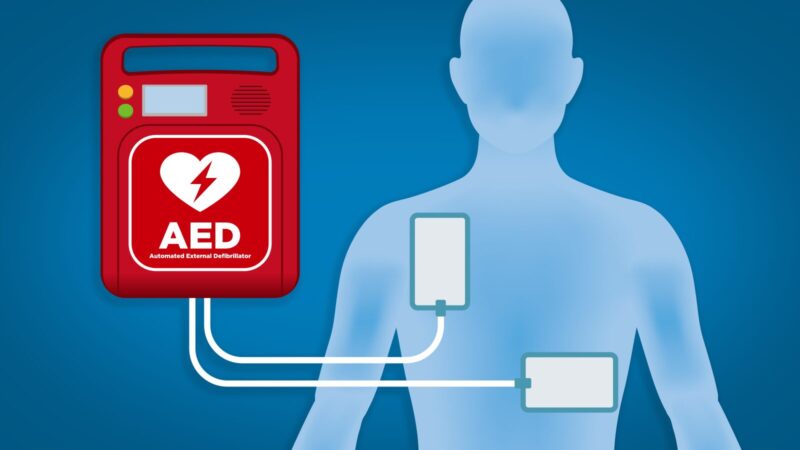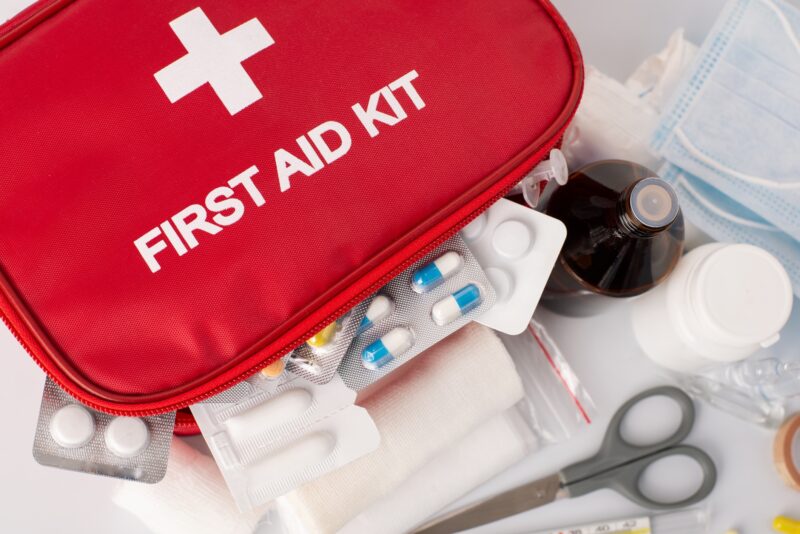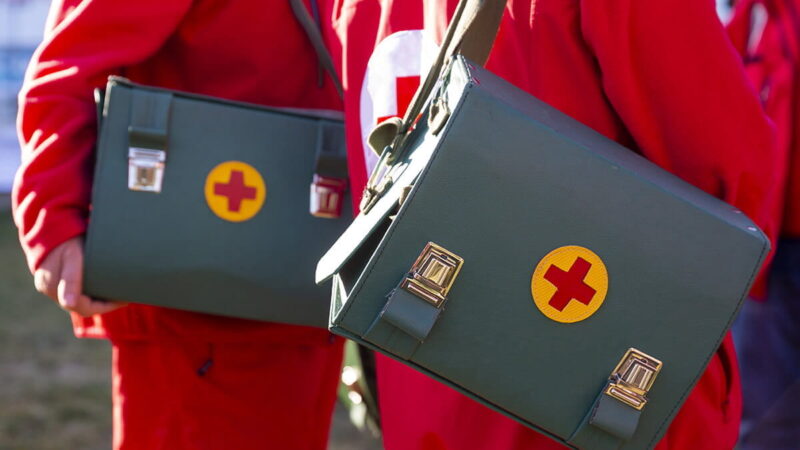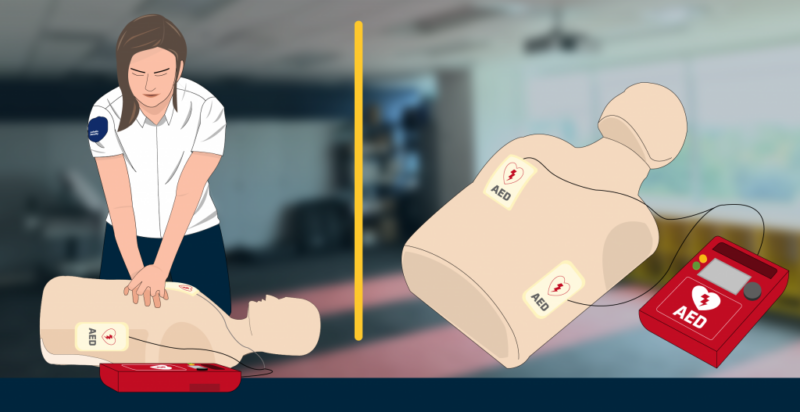Imagine this: You’re at a community event, perhaps a sports game or a family picnic, when suddenly someone collapses to the ground, clutching their chest. Time freezes, and panic starts to set in.
People yell, “Is there a doctor here?” The next moments are critical; every second counts. Fortunately, someone has an Automated External Defibrillator (AED) in their first aid kit, and within minutes, the collapsed individual is revived and stable, awaiting professional medical help.
It’s a scenario where an AED, a device we often walk past without giving much thought, becomes vital.
This incident paints a vivid picture of why AEDs are an essential component in first aid kits, particularly in public settings and events. First aid kits are usually packed with items like band-aids, antiseptic wipes, and gauze—helpful in treating minor cuts and bruises.
However, the inclusion of an AED takes the concept of ‘first aid’ to an entirely new level. Let’s delve into the benefits of having an AED in your first aid kit.
Where to Find an AED

One of the essential aspects of making AEDs an integral part of first aid kits is knowing where to acquire one. While they’re becoming increasingly common in public places like airports and schools, individuals and organizations can also purchase them for private use.
You can find one in an AED store or order one from an online platform. With every order, you’re provided with detailed guides covering essential topics like device operation, maintenance, and training resources.
Prompt Response to Cardiac Arrest
Cardiac arrest is a severe medical emergency that strikes without warning. It can happen to people of all ages, including those who seem perfectly healthy. When cardiac arrest occurs, the heart abruptly stops beating, hindering the flow of blood to vital organs.
Brain damage can start within four minutes, and every minute that passes without treatment reduces the chances of survival by approximately 10%. In such time-sensitive situations, waiting for an ambulance is often not an option.
Having an AED in a first aid kit ensures immediate treatment. Anyone can use an AED; you don’t need to be a healthcare professional. These devices come with clear audio and visual cues that guide the user through the process.
By shocking the heart back into its normal rhythm, an AED can literally be a lifesaver.
Making First Aid More Comprehensive

Traditional first aid kits are excellent for everyday accidents like cuts, sprains, or minor burns. However, they lack the equipment to handle life-threatening situations like cardiac arrest. Including an AED transforms a standard first aid kit into a comprehensive emergency response toolkit.
It makes you better equipped to handle a broader range of medical emergencies, from minor injuries to critical life-or-death scenarios.
Being comprehensive isn’t just about adding more tools; it’s about being prepared for the uncertainties of life. Accidents and emergencies are unpredictable.
Community Safety and Peace of Mind
Think about places where people gather: schools, community centers, churches, and sports arenas. These are places where the likelihood of a medical emergency occurring is higher simply because of the number of people present. Adding an AED to first aid kits in these areas is a proactive approach to community safety.
Knowing that an AED is available can offer peace of mind to individuals who are at a higher risk of cardiac events, as well as their families. Schools that have AEDs in their first aid kits not only safeguard the students but also the staff and parents who frequent the facility for events or meetings.
Community-wide awareness and education about the presence of AEDs can further instill a sense of safety and readiness among residents.
Democratizing Emergency Response

An interesting aspect of including AEDs in first aid kits is how they ease the ability to provide emergency medical assistance. You don’t have to be a doctor or a nurse to operate an AED. Modern AEDs are designed to be user-friendly, with simple instructions that anyone can follow. This means that every one of us has the potential to save a life.
Empowering ordinary people to take extraordinary actions is at the heart of democratizing emergency response. And it starts with awareness. The more we know about AEDs, their benefits, and how to use them, the safer our communities become.
Encouraging Wider Community Education and Training
While an AED is designed to be user-friendly, its effective utilization is maximized when more people in the community understand how to use it. Integrating AEDs into first aid kits sparks conversations about their importance, inevitably leading to increased interest in training programs.
The American Heart Association, Red Cross, and other organizations offer courses on CPR and AED use, empowering people with the skills they need to act decisively in emergencies.
When AEDs are included in first aid kits at schools, offices, or community centers, it presents an excellent opportunity to educate larger groups. Routine training can be incorporated into school curricula, employee orientation programs, or community workshops.
Technological Advancements Making AEDs More User-Friendly and Efficient

Technology has come a long way in making medical equipment more accessible and easier to use, and AEDs are no exception. Modern AEDs are incredibly user-friendly, featuring voice prompts, easy-to-follow visual cues, and even real-time feedback mechanisms that guide the user through the CPR process.
Some AEDs are so advanced that they can analyze the patient’s condition and only administer a shock if it’s needed, thereby reducing the chance of misuse.
Furthermore, many AEDs now come with long-lasting batteries and self-check features, allowing them to remain operational with minimal maintenance.
This ease-of-use and low upkeep make them ideal candidates for public places and high-stress environments where the user may not have medical training.
Conclusion
To sum up, the benefits of having an AED in first aid kits are immense and multifaceted. It elevates the scope of first aid from treating minor injuries to saving lives during critical emergencies.
Including an AED in your first aid kit could be the best decision you ever make, a decision that could save a life one day—maybe even your own.

